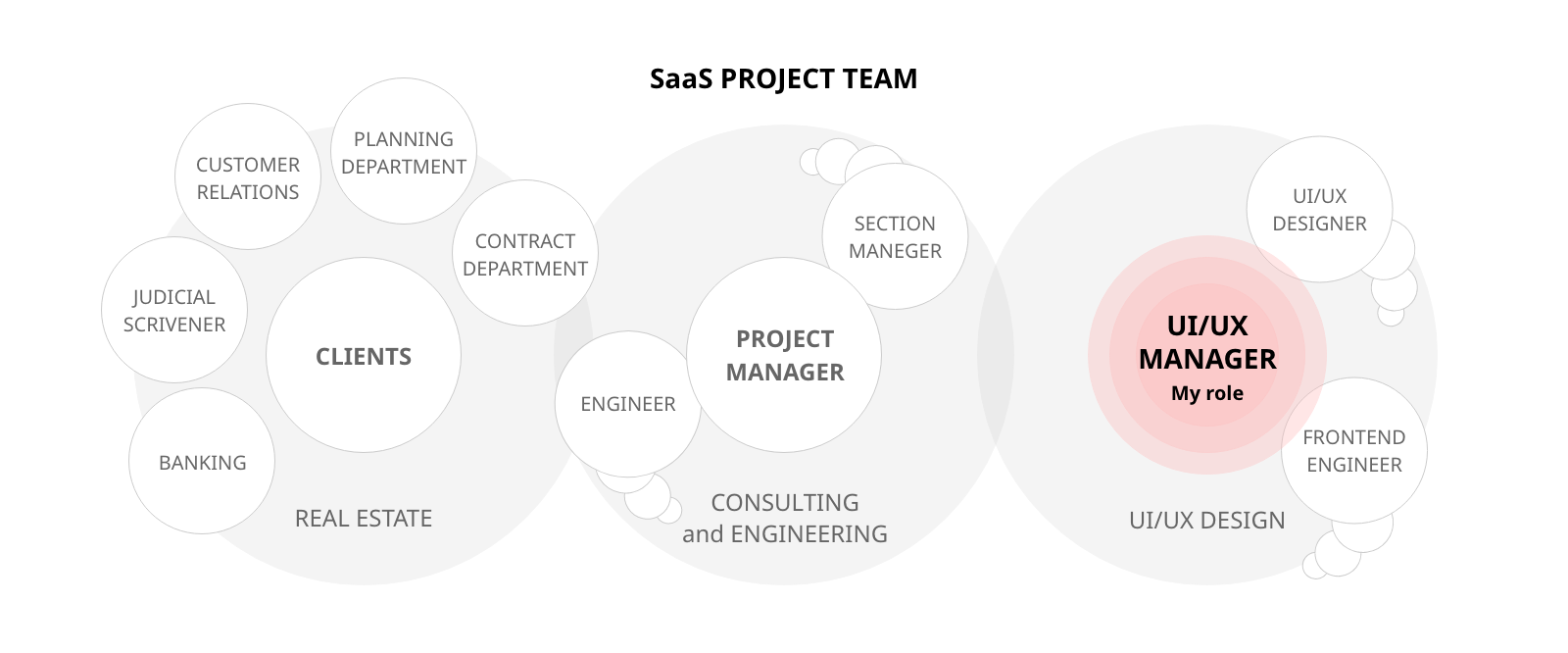B2B2C PROPERTY MANAGEMENTSaaS PLATFORM
Product Designer (Remote)

I led the UI/UX design for a B2B2C property management SaaS that transitioned from a paper-based system to a pioneer cloud-based management system. The system contains management of finance, legal, clients' lists, documentation, etc, for cross-functional team empowerment.
- Unfortunately, I can only show a partial section of the work I completed on this project due to privacy reasons.
SKILLS
- User Research
- UI/UX Design
- Information Architecture
- Build a Design Systems
- Project Management
- Human-centered Design Thinking
- problem-solving
TOOLS
- Adobe XD
- Story Book (UI library)
- G-Suits
- Backlog (like Asana and Jira)
TIMELINE
- 2020/8-2020/10 (3 months) Initial design phase
- 2020/11-2020/3 (5 months) Requirement definition/ Build Initial design system
- 2021/5-2021/6 (1 month) Build UI library (Storybook)
- 2021/9-2022/3 (7 months) Second requirement definition/ UI/UX update/ Design system update
- 2022/11-2023/4 (6 months) Third requirement definition/ UI/UX update/ Design system update
- 2023/5-Present Additional iteration on prototypeing and Usability test/ Engineer Agency collaboration phase
TEAM MEMBERS

CHALLENGES
- Aging contract accounting system with an outdated UI and accumulated inefficiencies.
- Enormous workload due to dual management of paper and web.
- Complex navigation and overload information on the legacy management platform.
- Human errors caused by analog management.
- Decreased customer satisfaction due to complex procedures and interactions.
GOALS
- Ensure compliance with enhanced legal requirements and address user security and privacy protection.
- Update the UI/UX to a new design while preserving the practical functionality of the legacy SaaS.
- Ensure cross-device functionality on tablets and desktops to effectively communicate with customers/tenants.
- Reduce total cycle times by 30,000 hours, enabling seamless cross-functional communication and workflows among the Manager, owner, accountant, bank, and customers.
RESEARCH
- Gather important points by reviewing the provided documents such as related laws, existing design/documentation, and Brand Guidelines.
- Identify potential needs and pain points through user interviews that gather insights, feedback, behavior, and usage data in the user journey.
- Understand expertise, user flow, and UX trends by gathering insights from the overall real estate market and cloud-based management platforms.
- Consolidate all information within the team to prioritize problems and tasks based on their problem-solving potential.


DESIGN CHALLENGES
- Ensure readability, user-friendliness, and intuitive design for all users, especially those aged 20 to 60.
- Simplify the complex navigation and reduce information overload.
- Establish seamless interactions between users.
- Streamline workflow approval processes.
DESIGN PROCESS
- Establish the initial-design to set the fundamental design tone and manner.
- Build an initial design system and components, referencing relevant platforms through design trend research.
- Translate Excel-based information about workflows and functions, which we were provided by the management team, into high-fidelity wireframes using the design system. (Flexibility translates into low fidelity-wire flame if it's necessary, and unless not time-consuming.)
- In the meanwhile, Conduct usability tests to improve Use Experience.
- Iterate on prototyping and usability tests until the problems are resolved from the most prioritized tasks.
- Periodically revise the design system to ensure consistency and scalability.


COLLABORATION with an Engineering Agency
- Designed over 100+ artboards in Adobe XD to clarify the client's requirements and translate them for the engineers.
- Integrate the Storybook (UI library) with design system components and layouts to enhance coding transparency and efficiency.

NOTABLE ACHIEVEMENTS
- Drove creative thinking in brainstorming sessions, turning client ideas into creative visuals, which encouraged strategic and innovative thinking.
- Built strong client relationships to identify issues early to advise on substantial UI/UX changes.
- Implemented a project management tool to streamline the feedback process from the 50+ members of the engineering team.
RESULTS




